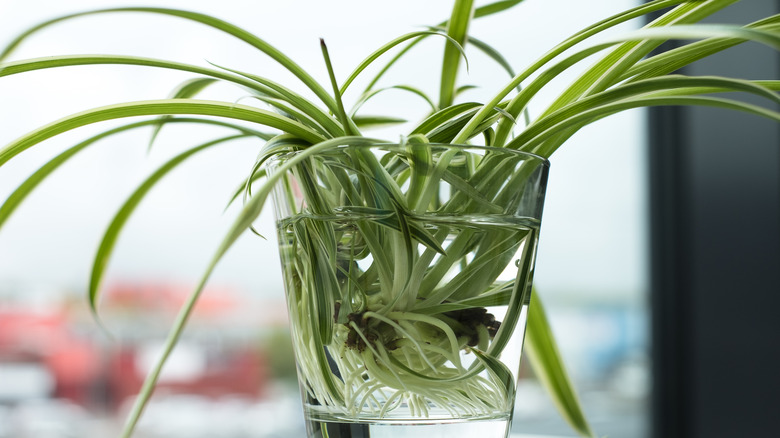Why This Air-Purifying Plant Is Perfect For Your Laundry Room
When choosing indoor plants, there are many factors to consider, and air purification is a benefit that is sometimes overlooked. Spider plants are a popular choice for their ease of care, attractive foliage, and non-toxicity. But they also boast impressive air-purifying abilities. Spider plants can help purify your home, not only by removing harmful pollutants from the air but also by reducing static electricity and static cling, making them a perfect addition to your laundry room.
Spider plants are generally considered easy to care for, which makes them a good choice for new plant owners. They are known for their adaptability and resilience and can thrive in a variety of conditions. They prefer bright, indirect light, and while they can tolerate lower temperatures, exposure to frost or freezing temperatures can damage the plant. The plant should be watered when the top inch of soil dries out. Spider plants prefer temperatures between 55°F and 80°F. When they are well cared for, these plants are known for producing spiderettes that can be easily propagated so you can have more plants to help purify several parts of your home.
How spider plants purify the air
Spider plants are known for their ability to remove harmful pollutants and toxins from the air. They achieve this through a process called phytoremediation. They absorb pollutants through their leaves and roots, breaking them down into harmless compounds that are then released back into the air.
According to a study conducted by NASA, spider plants are among the top plants for improving indoor air quality. They are particularly effective at removing volatile organic compounds (VOCs) such as benzene, formaldehyde, and xylene. These toxic chemicals are commonly found in household products like cleaners, paints, and furniture. By absorbing these pollutants, spider plants help to create a cleaner and healthier indoor environment in your laundry room where many cleaners and disinfectants are typically stored.
In addition to removing VOCs, spider plants also produce oxygen during the process of photosynthesis. This means that having a spider plant in your home can help improve the overall air quality, making them a valuable asset for indoor spaces.
Spider plants help reduce static cling
While spider plants absorb various pollutants and gaseous particles in the air through their leaves, they also help maintain a balanced humidity level. Static electricity is a common problem in many homes, particularly during dry winter months. It can cause annoying issues like clingy clothes, flyaway hair, and dust accumulation on surfaces. Spider plants can help alleviate this problem by reducing static electricity, which is especially useful in the laundry room.
Spider plants absorb moisture from the air through a process called transpiration. As the plant absorbs moisture, it releases water vapor into the atmosphere, which can help to increase the humidity levels in your home. This increase in humidity can help to reduce the buildup of static electricity, as higher humidity levels make it more difficult for static charges to accumulate.
A stable humidity level is crucial for combating static cling, as it can significantly decrease the amount of static electricity generated. Many people opt to use humidifiers to combat this, but the devices and energy costs can add up. Spider plants are a much more cost-effective option, and can help neutralize static charges by regulating humidity levels, making unloading the dryer a much more pleasant experience.


